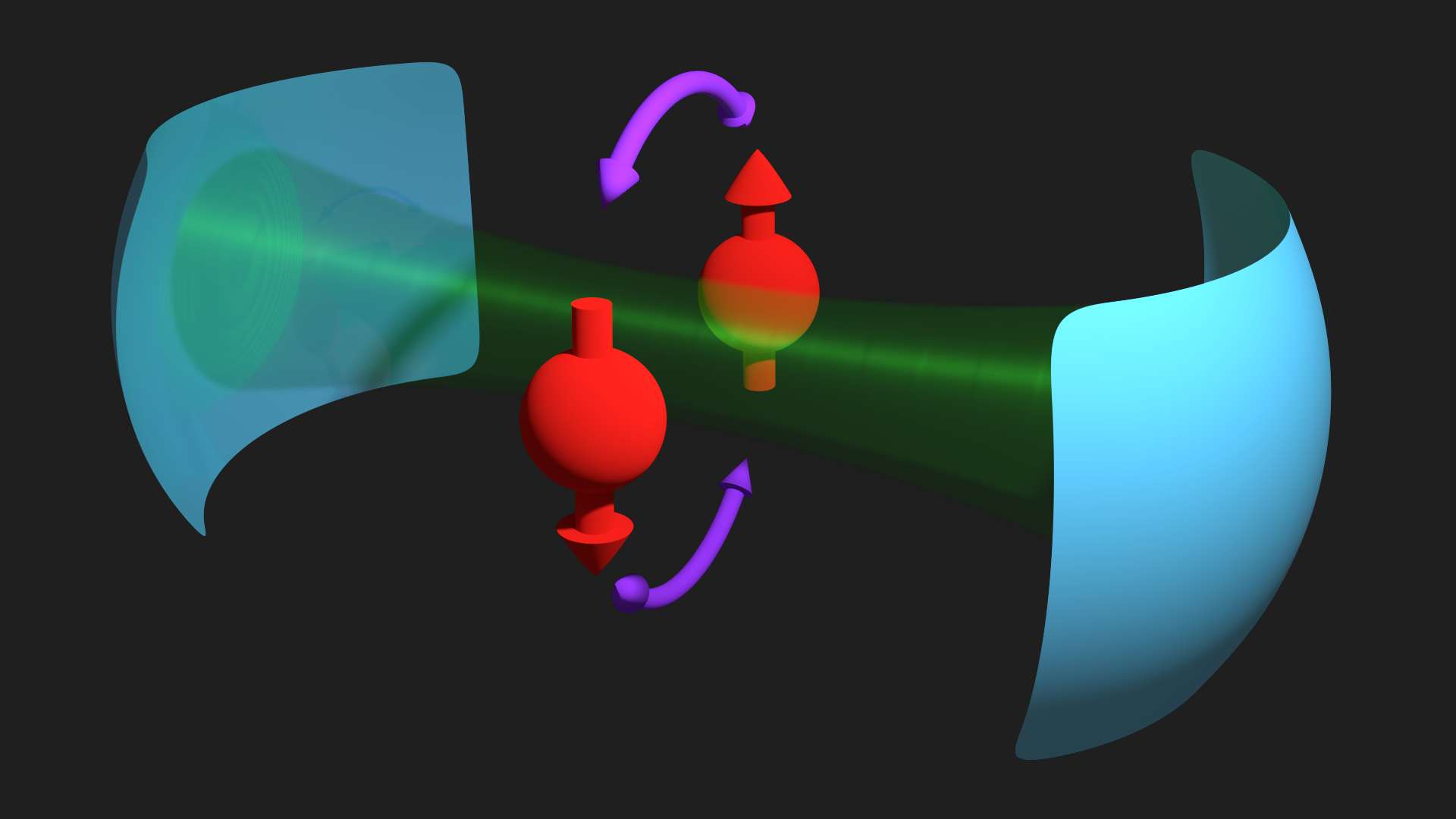
Using light to transmit quantum bits
Physicists in Princeton, Konstanz and Maryland couple quantum bits to light
One step closer to quantum computing: New research results demonstrate the potential of light to serve as a medium to transmit so-called quantum bits or qubits (basic information units for quantum computers). Physicists from Princeton University (USA), the University of Konstanz and the Joint Quantum Institute (Maryland, USA) successfully coupled qubits to the light’s electric field. In addition to making it possible to connect qubits that are not immediately adjacent to each other, this process could also allow for the interference-free readout of highly sensitive quantum states. These research findings were published in the renowned scientific journal Nature on 14 February 2018.
The physicists first created qubits comprised of silicon by separating individual electrons and enclosing them in silicon chambers – so-called "double quantum dots". The electron’s spin state, the so-called electron spin, serves as a storage medium for qubits. Using a magnetic field, the researchers succeeded in transferring the quantum information of the electron spin to light (photons). Light consists of oscillating electric and magnetic fields. The researchers successfully coupled the electric field of light with the electron’s spin, whereby the electron transmits its quantum information to the light.
This research achievement now makes it possible to transfer quantum information via light to other qubits. To couple qubits, which are not directly adjacent to each other and are more than a few nanometres apart, was until recently one of the major challenges in the development of quantum computers.
“This result points our research in a whole new direction,” said Jason Petta, Professor of Physics at Princeton University. He makes the following comparison: “It takes us out of living in a two-dimensional landscape, where you can only do nearest-neighbour coupling, and into a world of all-to-all connectivity. That creates flexibility in how we make our devices.”
The theoretical framework for the research project was developed by researchers at the University of Konstanz led by Professor Guido Burkard and Dr Mónica Benito from the chair of Condensed Matter Theory and Quantum Information. “This result provides a path to scaling up to more complex systems,” says Guido Burkard and adds: “One of the strengths of our silicon-based approach is that it meets the standards of the semiconductor industry."
The researchers assume that their method could solve another problem related to quantum computing: Qubits are extremely sensitive to external sources of interference such as vibrations or heat. Simply trying to read out the qubit could destroy its quantum state. The new approach from Princeton, Konstanz and Maryland could circumvent this issue by using light to read out the quantum information. In comparison to previous readout methods, light only minimally changes the position and state of the electron carrying the quantum information and does not delete it.
Original publication:
X. Mi, M. Benito, S. Putz, D. M. Zajac, J. M. Taylor, G. Burkard und J. R. Petta. A Coherent Spin-Photon Interface in Silicon, Nature Advance Online Publication (AOP), online edition from 14 February 2018
Facts:
- Physicists from Princeton, Konstanz and Maryland showed they could transfer quantum information, encoded in the electron property known as spin, to a particle of light
- Current publication in the scientific journal Nature: X. Mi, M. Benito, S. Putz, D. M. Zajac, J. M. Taylor, G. Burkard und J. R. Petta. A Coherent Spin-Photon Interface in Silicon, Nature Advance Online Publication (AOP), online edition from 14 February 2018
- Research collaboration between the University of Princeton (USA), the University of Konstanz and the Joint Quantum Institute of the University of Maryland (USA) as well as the National Institute of Standards and Technology
- Single electrons trapped in silicon chambers are used to create quantum bits. The electron spin (the electron’s spin state) serves as a storage medium for quantum information.
- The electron spin is coupled to the light’s electric field. The electron transmits its quantum information to the light.
- Quantum information can thus be transmitted to other quantum bits via light - even to quantum bits that are not immediately adjacent to each one another.
- Additionally, this method could also make the interference-free readout of highly sensitive quantum states possible.
